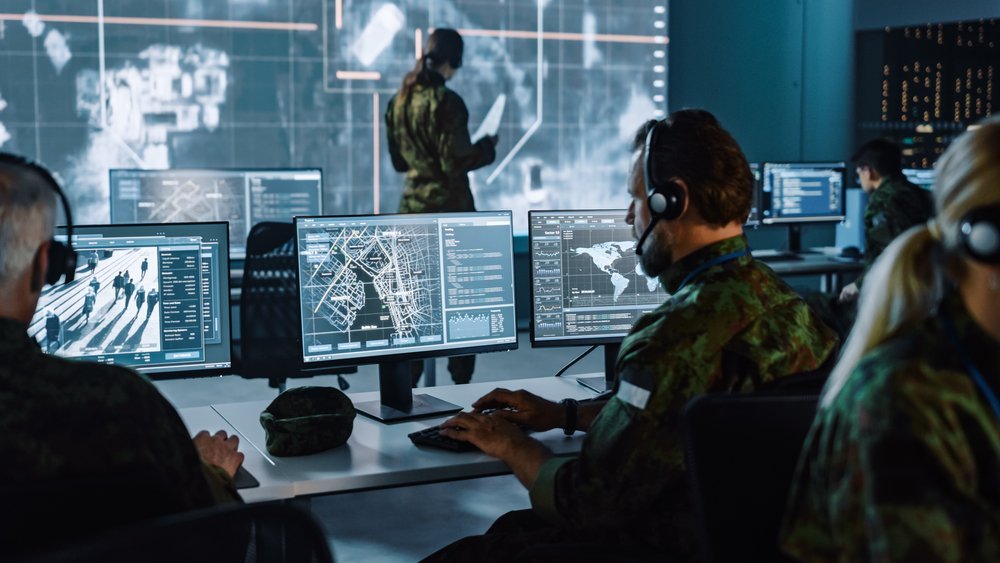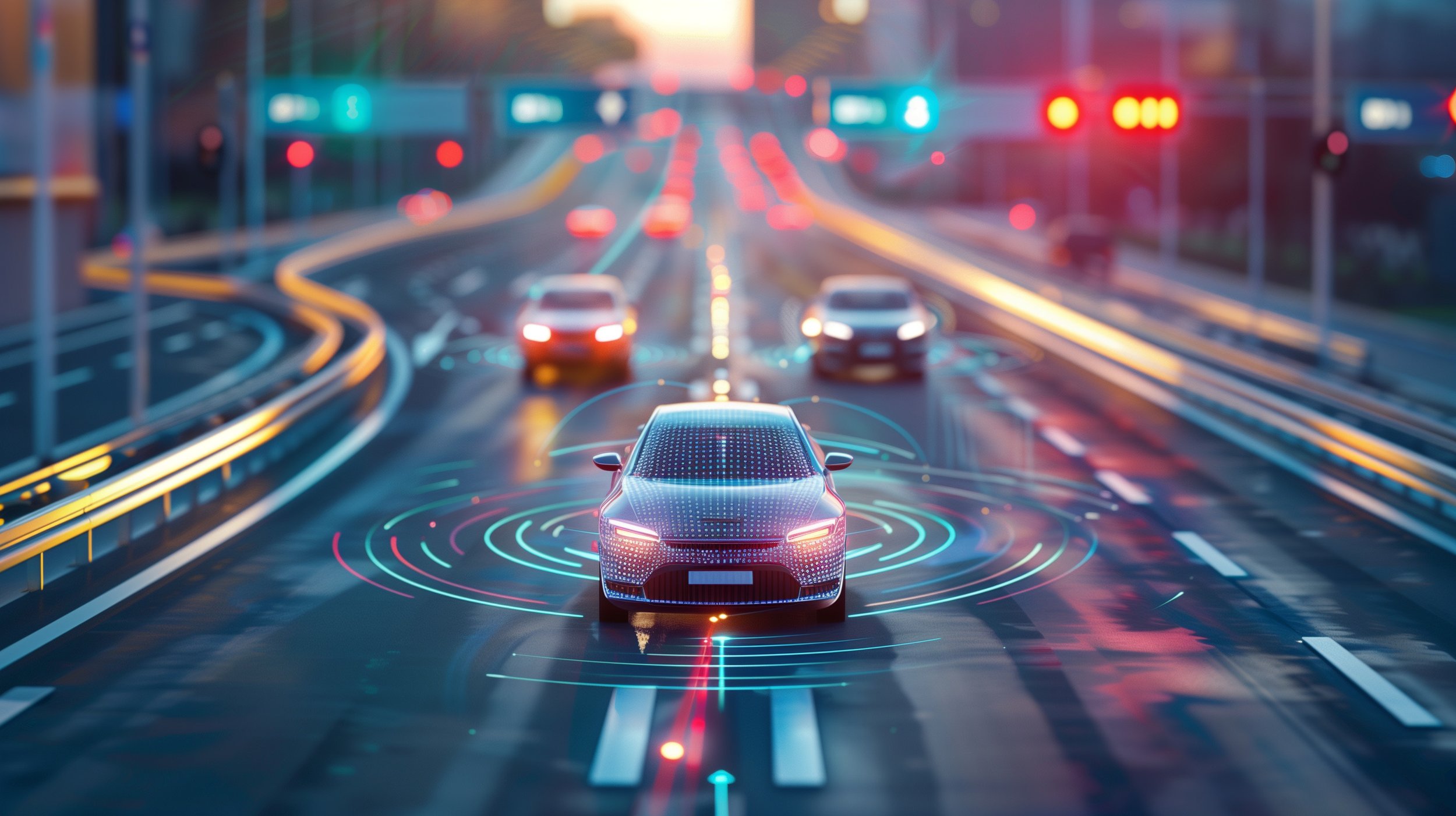The Crucial Link Between Data Annotation and Autonomous Cruise Control Systems
DDD Solutions Engineering Team
November 12, 2024
With the advancement of transportation technology, autonomous driving is slowly starting to seep into our vehicles every year, making them more independent and smarter. This is illustrated by advanced autonomous cruise control systems (ACC) that can receive live data and use predictions to adapt their speed to the traffic flow, making the ride both safe and comfortable.
These systems fuse information from Lidar, radar, ultrasound, video, thermal, and GPS sensors, each one comprehensively labeled to synthesize a "global view.”
Data annotation for autonomous driving is a way of tagging raw data to identify critical situations on the road for the ML models to react and make important decisions. This allows the autonomous vehicles to 'see' their environment such as identifying, classifying, and locating objects that are not only nearby but also differentiating between vehicles, pedestrians, and obstructions.
In this blog, we will explore the interlinking of data annotation with autonomous cruise control in autonomous vehicles, its various annotation techniques, and associated challenges.
Understanding Autonomous Cruise Control Systems
Autonomous cruise control (ACC) systems are an essential component of ADAS to incorporate features like lane keeping, traffic management, and automated steering. Instead of simple distance-keeping models with alarms, these systems have become automation wonders that use radar to control speed and prevent collision. Today, ACC systems not only improve the safety of the vehicle but drastically reduce congestion and rear-end collisions.
These technologies consist of sensors that detect and warn the driver about any potential threats or collisions when driving. For example; when this situation occurs a red light begins to flash with an alert showing ‘brake now’ appears on the dashboard, along with an audible warning to help the driver slow down the vehicle. The effective use of autonomous cruise control systems will maximize traffic flow due to its spatial awareness.
The Role of Data Annotation in Autonomous Cruise Control Systems
Data annotation is a big step in training data for autonomous cruise control. The process involves extensive and thorough identification and classification of data which considerably improves the training process for these systems. Machine learning algorithms need to be trained in different driving situations and scenarios to make these ACC systems highly accurate and safe in real-world situations.
Reorganizing this labeled data not only aids in its interpretation but subsequently reduces the amount of computational power required and increases the number of sensors that can be efficiently utilized. Whenever there are limited sensors or data available in any scenario, then a pre-annotated dataset can act as a booster for system performance. It enables the vehicle to evaluate different situations from various angles, improving its decision-making process.
Now that we have understood how data annotation helps ACC systems, let’s take a closer look at the different types of data annotation techniques and their use case scenarios.
Manual Annotation – As the name suggests, these are primary types of annotations where a human carries out the entire annotation process.
Bounding Box Labeling - This method is effective for fast detection, such as detecting cars or pedestrians. This means putting boxes around objects in an image and is a simple, low-effort labeling task.
Semantic Segmentation - This technique provides a label to every pixel of an image which specifies the category each object falls into, useful for more granular analysis and understanding of objects in the scene.
Instance Segmentation – Similar to semantic segmentation it goes further by distinguishing between different instances of the same type of object within the scene.
Lane and Drivable Area Marking - This is an annotation type that is particularly used for autonomous driving, lane marking, and marking the drivable area found by the vehicle.
Point Cloud Data Annotation - This technique is applied in 3D modeling, as it is used for labeling the data acquired from LiDAR sensors that are needed for constructing the vehicle’s understanding of its surroundings in three dimensions.
Video Motion Prediction - Annotating video data to predict future object motions for anticipatory actions in autonomous driving
Contextual or Sensor Data Annotation - This can be a specific set of labels according to context or sensor readings, used for certain scenarios or conditions.
These various data annotation services cater to different needs within autonomous cruise control systems, enhancing their performance and reliability by providing detailed and accurate data for training machine learning algorithms.
Challenges in Data Annotation for Autonomous Cruise Control
Data annotation is very complex when it comes to Autonomous Cruise Control systems. However, the biggest challenge is data collection. The root cause is ingrained in collecting diverse and comprehensive driving data in the most realistic driving scenarios. It is also difficult to obtain consistent data over different driving routes because it is nearly impossible to deliver a clean drive test on the exact same route with a consistent reference driver.
Let’s say that you have acquired high-quality data, the next challenge is to create labeling guidelines that do not too closely adhere to the reference driver behavior. This becomes a daunting task in an urban landscape, which is characterized by non-linear scenarios and variance in human driving styles. The chances are quite high for the ACC system to unknowingly learn poor driving behaviors from the data that mirrors the human driving behavior which may not be desirable.
In addition, modifying the guidelines on what is considered to be newer information or re-assessed behavior of data remains difficult. The process itself is prone to inherent biases, a common problem across machine learning applications but most amplified in traffic-related studies as those bear socio-legal implications. The intrinsic limitations of existing algorithms, combined with the practical constraints on resources for creating large new datasets, make this process unfeasible to execute at scale.
Quality Control
Accurate data annotations are critical, especially since wrong data can actually end up executing incorrect driving decisions and posing serious risks. Standardizing annotation is beneficial to ease the integration of diverse modules into a unified system. However, this standardization comes with its own errors due to discrepancies in the annotating process.
Some strategies to address these error types include a thorough
Training of annotators.
Multiple annotations by selected experts on the data.
Use of simpler ML models (i.e.: models trained only for assisting annotators).
Collaborative platforms where annotators can talk about edge cases.
Exploring advanced quality control mechanisms and developing new tools for training data could significantly improve the reliability of datasets used in autonomous driving. While each of these contributes to improved data quality, the variability associated with human judgment presents an ongoing challenge that is addressed through a combination of human factors and machine learning techniques as well as collaborative platforms.
Pathway to Innovation and Future Trends
Data annotation plays a pivotal role in the development of autonomous driving technologies, particularly by refining cruise control systems. Enhancing this process could potentially stem from collaborative efforts among researchers, practitioners, and industry leaders. This includes the integration of machine learning and automation to improve the scalability and efficiency of data annotation. Given the rapid advancements in computer vision and machine learning, they provide significant enhancements to image-based annotation methods which could considerably reduce time of implementation while tremendously increasing system precision.
An interesting direction for autonomous systems is shadow mode neural networks. These networks are trained on the same data inputs as traditional autopilot systems, but their response patterns are monitored based on what they do in real-time driving scenarios. This has the effect of incremental adaptation over time in reliability, whereby learning when exactly the vehicle should brake/be cautious when getting close to something.
Another avenue is with the accessibility of raw GPS data also appears to be heading toward a more unified approach globally. The goal is to create a common standard that would facilitate the sharing of this data and thus reduce the mistakes of navigation systems based on GPS information. An international incentive system using harmonized past trends will encourage more extensive collaboration among stakeholders possessing the data.
Furthermore, as this industry matures, the attention to regulatory and standardization principles is increasing, especially in annotation for data referring to how training of autonomous driving systems happens and what validity shall take place. Regulations governing driver licensing, vehicle safety ratings, and crash tests can also be used as a model for stricter annotation standards that could promote safer practices. Not only would it increase the accountability of driving, but also motivate car manufacturers to build safer cars.
Moving ahead, incorporating LiDAR data to measure Doppler shifts, could provide additional information about how fast other vehicles are moving improving autonomous systems to respond to changing speed environments. This is one step in a process that will involve thousands of experts over the years, all synthesizing many systems and challenging each other to navigate the safe adoption of these technologies into everyday use.
Resolving these aspects will bring us closer to truly reliable, efficient, and safer autonomous automobile solutions opening the path for the widespread acceptance and implementation of such technologies in the near future.
Read more: Ground Truth Data in Autonomous Driving - Challenges and Solutions
Final Thoughts
When it comes to Autonomous Cruise Control (ACC) systems, the importance of making quick decisions is critical when driving in the real world. Data annotation provides essential information that algorithms require to process and connect sensor data with operational systems. A well-trained output from these ADAS models allows these systems to recognize better and respond to hazards in challenging scenarios.
How Can We Help?
As a data labeling and annotation company, we provide comprehensive solutions for data annotation and labeling for autonomous cruise control systems to enhance reliability and safety in real-world situations. Talk to our experts about how DDD can help you with your autonomous driving projects.








